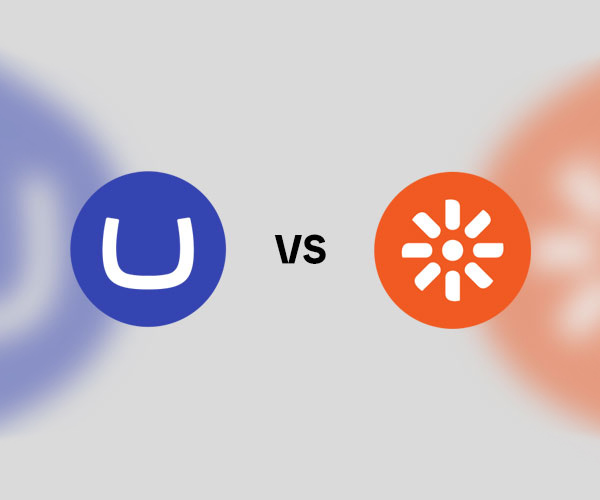If you're in the market for a new DXP or CMS platform for your corporate website ecosystem and are considering Umbraco or Xperience by Kentico — or you're already using an older version of either system and wondering whether to upgrade or switch — you're definitely in the right place to ask.
At adhdev, a web development agency and long-time Umbraco partner — as well as one of the oldest Kentico partners in the region — we’ve seen firsthand how both platforms perform in real business scenarios. So, we can walk you through what each system offers, especially from the business side.
There are a lot of moving parts here: licensing, marketing, personalization, AI, and the areas where each platform shines or struggles. But, by the end of this, you will have a clearer idea of which fits your use case best, trust us.
What’s on the Table: AI, Marketing, Multi-Site and More
AI Tools — Built-In vs Pick-and-Choose
- Xperience by Kentico comes with AI baked in. Think of it as: content suggestions, SEO prompts, email helpers, campaign stuff — ready to go. You don’t need to hunt down plugins or glue together third-party tools to get basic AI-powered content support.
- Umbraco takes a more modular approach. There are AI integrations/plugins (OpenAI, ChatGPT wrappers, etc.), but you pick what you need and stitch it in. More work upfront, more freedom to customize.
So if you want AI without the onboarding headache, Kentico gets you there faster. If you want flexibility or have specific AI tools — like more sustainable Small Language Models, for instance — in mind, Umbraco gives you more control.
Licenses & Ongoing Costs — What Are You Paying For
- Umbraco itself is free. No license fees. But “free” doesn’t mean “zero cost.” Natually expect spending on hosting or paying for Umbraco Cloud. Plus there’s dev time, perhaps paid support or premium add-ons if your project demands it.
- Xperience by Kentico isn’t cheap, let’s be honest. You’re buying into a full DXP. Whether you go SaaS/subscription or perpetual license, costs tend to be significantly higher. But in return, many features are already built-in. Predictability comes with the price.
Your budget planning with Kentico will need to include license + support + infrastructure. With Umbraco, more of the cost is front-loaded (dev, configuration, integration), plus you’ll maintain it over time.
One Big Content‐Rich Site vs Dozens of Smaller Sites
This is where each platform really shows its personality.
- If you need many websites / digital channels (say, multiple country-sites, localized brand microsites, email channels, mobile, etc.), Xperience by Kentico probably wins here. Shared content, unified dashboards, centralized marketing data — all that is part of what you pay for.
- If your main thing is one massive website — content-heavy, complex structure, lots of pages — Umbraco can handle that with ease. Especially since you can tune performance, customize editorial experience, integrate exactly what your editors need, etc. With Umbraco, multi-site is also possible, just takes more architecture and setup.
If you're managing many sites or want consistency across brands or regions, Kentico would be more “turn-key”. If you want deep customization and control for a few big properties, Umbraco gives you more elbow room.
Marketing Personalization — How Deep Do You Want To Go?
- XbK gives you a pretty full-suite experience: marketing automation, A/B tests, personalization rules, email campaigns, analytics, forms and so on. Everything under one roof. For marketers this means a LOT LESS manual work and fewer integrations.
- Umbraco: core stuff is good (content scheduling, forms, basic SEO, workflows) and then you bolt on extra via add-ons or services. Personalization is possible and extremely solid (via extensions like Umbraco Engage Marketing Suite) but you’ll need your dev or integrations team to get it a bit polished.
Built-In vs Extensions
Every platform has strengths. Here’s where each wins if you want less overhead:
- Kentico’s Built-In Strengths: Everything from content versioning, multi-language support, approval workflows, personalization, marketing automation can often be done without buying separate tools. Good if you want something that works pretty well out of the box, with fewer moving pieces.
- Umbraco’s Extension Playground: If you’re okay picking and configuring — you can build exactly what you need, perhaps lighter, perhaps more adapted to your organization. Great marketplace, lots of plugins, big community. But your team will need to decide which plugins, keep them maintained, ensure compatibility.
Deployment Models: Where You Host, How You Pay
- On-Premise / Private Cloud: Both platforms support it. Umbraco can run anywhere (.NET Core etc.), XbK has versions for self-managed setups. You pay for the infrastructure, security, uptime.
- Cloud / SaaS: Xperience by Kentico has its SaaS/managed-cloud plans; Umbraco has Umbraco Cloud. With cloud setups you get added value: hosting, upgrades, sometimes support, redundancy. But those come at a recurring premium. For many EU and US companies compliance/regulation/security will push toward cloud or private cloud, so factor that in.
Where Each Platform Performs Best
Here’s roughly how the two stack up by industry or a niche, based on what people are saying, what we’ve seen work with our clients, and what’s on the roadmap.
| Use Case / Industry | Umbraco’s Strengths | Best Fit | Kentico’s Strengths | Best Fit |
|---|---|---|---|---|
| Media / Publishing / Content-Heavy Sites | Highly customizable editing experience; great content/media handling; can tailor performance; cost-efficient if one big, high-traffic site. | Big news outlets, magazines, educational content, resource hubs. | Strong analytics + personalization + multi-channel distribution; nice if you also want e-commerce, subscription models. | Publishers who need everything: content, monetization, personalization. |
| E-commerce | Possible via Umbraco Commerce (paid option) or other extensions; flexible, integration friendly. | Boutique / specialized shops; brands with heavy custom front-end needs. | Now built-in: product catalog, cart, checkout APIs, customer/order management. Roadmap adding promotions, shipping/payment UIs. | Retailers with multiple brands, high volume, integrated email/campaign needs. |
| Healthcare / Finance / Regulated Industries | Good, especially if you need control, compliance, high customization; community supports GDPR etc.; easier to tweak security when you own the stack. | Institutions, agencies, clinics, financial advisory. | Strong compliance, audit trail, permissions, multi-region support + marketing controls. | Corporates in finance, hospitals, insurance firms wanting unified customer engagement. |
| Enterprises with Multiple Brands / Subsidiaries | Possible, but more work (dev, architecture, potentially separate installs or careful multi-site setups). | When you need high brand differentiation, specialized site requirements. | Built-for that: multi-site, shared components, centralized data, roles, channels. | Multinational corporations, franchises, organizations with lots of digital touchpoints. |
What’s Coming Next & What People Are Saying
- Umbraco’s roadmap hints at more improvements in the cloud parts (simpler staging, better baseline/multi-site tools, more AI-friendly add-ons). It’s not radically changing the model, but making things smoother and even more composable.
- Kentico is also pushing further on its AI tools (more in marketing workflows, smarter personalization) and enhancing analytics & insights. Their recent releases show strong work on lowering friction for marketers.
In reviews (G2, Gartner peers), people tend to love Umbraco for flexibility, developer satisfaction, editor usability; the trade-offs cited are more setup time, cost of extensions or integrations, and maintenance.
For Kentico, reviewers often highlight powerful built-in marketing features, good support, and completeness; trade-offs include higher license costs, sometimes more complexity than needed for simpler sites.
Final Thoughts: Which One You Should Lean Towards
Where does it leave you then? Let’s simply put it this way:
- Go Kentico if you are a mid-large organization that wants as much as possible in one place: content + marketing + personalization + possibly commerce. Especially if you have many brands/sites, want things fast, or have your own marketing team handling content management, and you can afford predictable licensing and cloud or SaaS hosting.
- Go Umbraco if you are more budget-conscious up front, want to control what features you take on, maybe have strong dev talent, or have special custom needs (design, complex content models, etc.). It’s especially good if you expect content to grow but also expect to want to customize heavily over time.
Whether you’re planning an Umbraco upgrade or exploring Xperience by Kentico for a new multi-site setup, our team at adhdev has you covered. As one of the most experienced Kentico partners in the region and a long-time Umbraco partner, we’ve delivered dozens of successful projects across Europe and North America. With high-end expertise and cost-effective web development services, we help businesses choose the right platform — and make the most of it.
Choosing between Umbraco and Xperience by Kentico? Talk to ADHDEV — a certified Umbraco and Kentico Partner with seasoned experts and cost-effective web development services ready to support your next project.




